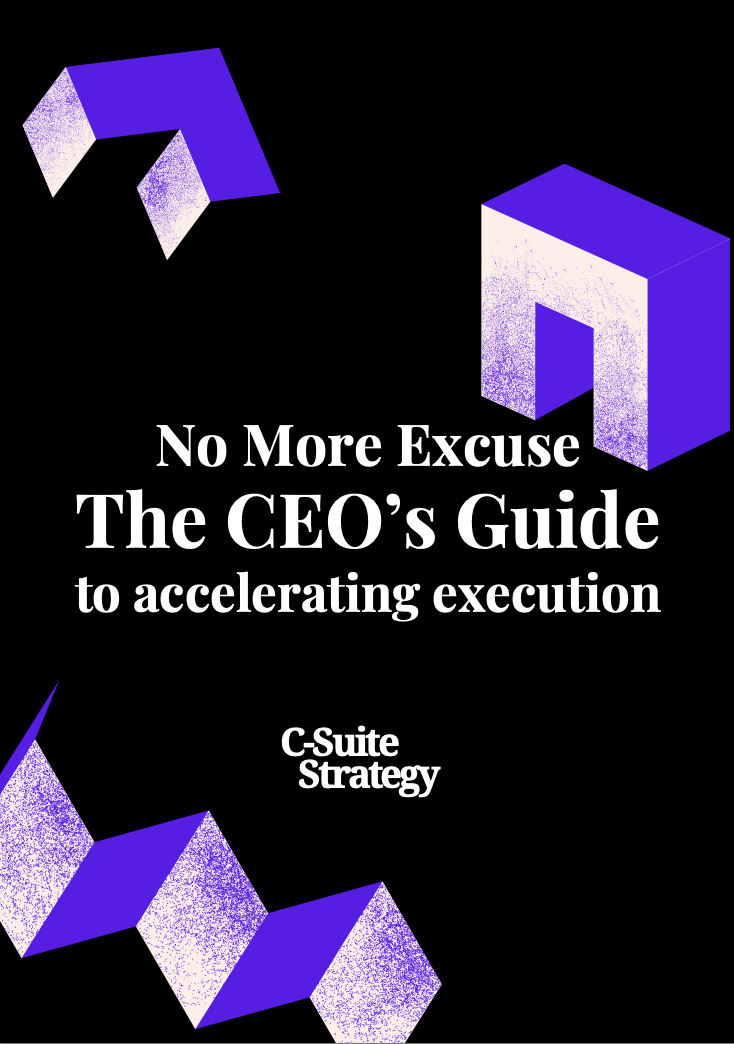
The Anatomy of Decision-Making in the C-Suite
Exploring the Intricacies of Decision Making in Leadership
In the context of high-level strategic management, decisions made by top executives carry a weight vastly different from everyday occurrences. The process of decision making in the C-Suite is a multifaceted endeavor that goes beyond a mere evaluation of financial outcomes or quantitative metrics. It demands a meticulous blend of analysis, intuition, and leadership values, which are often shaped by a decision maker's experience and the organization’s ethos. At its core, decision-making at this level involves a modeling of scenarios and outcomes that anticipate both the expected and unforeseen effects on the organization and its ecosystem. Take, for instance, a choice to pivot business strategy, which necessitates a comprehensive qualitative analysis, examining how life decisions at the helm affect not just the company's bottom line but also its workforce, stakeholder trust, and market position. It’s crucial to conduct these assessments with a keen awareness of how decisions resonate through the organization. Executive decisions often create a ripple effect, influencing numerous facets such as employee morale, customer satisfaction, and even public perception—all of which reflect the broader social implications of corporate actions. As decision-makers, it is important to weigh both positive and negative consequences with an eye on the greater good, aligning strategic choices with core organizational values. Time spent in making these deliberations is an investment towards sustainable success, as the social and financial ramifications stretch beyond immediate gratification to long-term viability. In understanding these dynamics, leaders must embrace analytical tools and frameworks that ensure robust decision-making processes. The choice of which model decision to apply should reflect the complexity of the task at hand, ensuring that decisions expect not only the alignment with corporate goals but also serve human beings—ensuring connections are not just transactional but transformative. Leaders should cultivate resilience and agility within their teams and structures to adapt to the outcomes analyzed, paving the way for future-ready decisions. This approach is integral to fostering a resilient organizational culture that supports sustained strategic success.The Domino Effect: How Decisions Cascade Through an Organization
The Domino Dynamics in Decision Cascade
In the fast-paced C-suite environment, every decision acts as a triggering point, setting in motion a series of responses across the organization. Understanding the domino dynamics is crucial for leaders to anticipate and manage how choices decisions reverberate through the company’s structure. This cascade effect illustrates how a seemingly isolated choice can unfold on different organizational levels, impacting not just financial aspects but the greater social sphere within the company. The core of this cascade begins with the decision making process itself. High quality decisions stem from comprehensive analysis and modeling of available data. However, the implications extend far beyond the initial choice. For instance, a decision to shift company values or redirect financial resources will undoubtedly shape the work life decisions and time spent by teams and individuals. It prompts an adaptation in priorities, which in turn influences outcomes social dynamics and often requires recalibrating roles or processes. To illustrate this further, consider a decision maker in a respected firm who decides to integrate new technology to boost productivity. This single choice triggers a wave of effects: employees might require training, workflows could be innovated, and potential financial implications must be managed. Moreover, the outcome might affect relationships beyond the organization, influencing partners and friends of the company in the business ecosystem. A well-prepared strategy analyzes potential negative impacts through qualitative analysis and models potential positive outcomes. The ripple effects can manifest swiftly or evolve over time, necessitating a constant reevaluation of the decision's broader impacts—a critical practice for maintaining alignment with organizational objectives. Leaders in the United States and globally are continuously challenged to anticipate these cascading effects in their decision making. It's paramount to engage in proactive strategies, ensuring that each decision aligns not only with immediate goals but also with long-term organizational success. For further insight into how decisions impact organizational culture and leadership, you might find value in exploring understanding the role of organizational culture assessments in strategic leadership. This link provides strategic perspectives on harnessing culture’s influence on decision outcomes and ensuring alignment with leadership objectives.Stakeholder Considerations: Balancing Interests and Expectations
Balancing Interests and Managing Expectations
In the complex web of C-suite decision making, considerations around stakeholders are pivotal. Stakeholders, ranging from employees to investors, are affected in multiple ways. Recognizing the ripple effects of strategic choices on these parties is central to sustaining both operational momentum and strategic intent.
Decision makers in the C-suite must evaluate the financial, social, and organizational effects on stakeholders meticulously. Decisions concerning resource allocation or strategic direction have both positive and negative outcomes that ricochet throughout an organization. Stakeholders, who often have differing priorities and values, will respond variably to decisions, highlighting the need for qualitative analysis of their expectations and potential reactions.
To effectively balance interests, C-suite leaders should:
- Conduct « what if » scenarios and modeling to predict outcomes
- Engage in time spent listening to stakeholder concerns
- Utilize financial and non-financial metrics for comprehensive analysis
- Foster transparent communication to build trust and manage expectations
Considering diverse interests facilitates more informed decision making, turning potential conflicts into synergies and ensuring that choices made are not only strategic but sustainable in the long term. Quality decisions are those that take the time to consider the various human beings affected, ultimately leading to decisions best aligned with organizational values and goals.
Communication: The Bridge Between Decision and Impact
Effective Communication: The Key to Successful Decision Implementation
In the realm of decision making, communication serves as the crucial bridge between the choices made in the C-suite and their subsequent impact on the organization. The way a decision is communicated can significantly influence its outcomes, whether positive or negative. It is essential for decision makers to prioritize high-quality communication to ensure that their decisions are understood and embraced by all stakeholders.
When making decisions, especially those with far-reaching effects, it is vital to consider the social dynamics within the organization. Human beings are inherently social creatures, and the way information is shared can affect morale, engagement, and ultimately, the success of the decision. By paying attention to the nuances of communication, leaders can foster a sense of unity and shared purpose among their teams.
Strategies for Effective Communication
- Clarity and Transparency: Clearly articulate the rationale behind the decision, including the values and analysis that informed it. Transparency helps build trust and reduces resistance.
- Timeliness: Communicate decisions promptly to prevent misinformation and speculation. The time spent ensuring timely communication can prevent greater issues down the line.
- Feedback Loops: Encourage feedback from those affected by the decision. This not only improves the decision's implementation but also provides valuable insights for future decision making.
- Consistent Messaging: Ensure that all communication channels convey a consistent message to avoid confusion and mixed signals.
By integrating these strategies, leaders can enhance the effectiveness of their decision making, ensuring that the choices they make resonate positively throughout the organization. This approach not only aligns with the organization's financial and strategic goals but also respects the social fabric of the workplace, leading to outcomes that are both impactful and sustainable.














